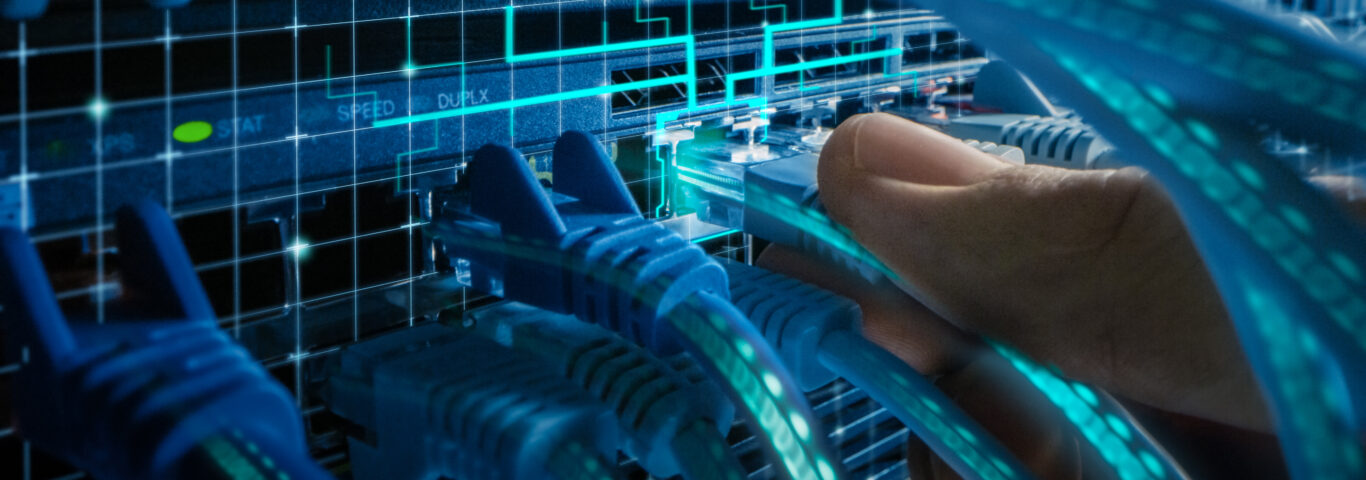We’ve made sure of fast internet for everyone in the Düren district at an early stage. Good for you: private households, schools, businesses and institutions benefit from future-capable internet technology in all municipalities. But what do all the phrases and abbreviations mean that you have to deal with concerning your connection?
When it comes to your internet connection the array of providers confront you with a wide range of terms and abbreviations. We list and explain the most important ones below.
Bandwidth
In the IT world, bandwidth describes the performance of a data transmission. Put precisely, it’s the amount of data that a cable or radio link can transmit per unit of time. In the analogue world it would be most comparable to a pipe diameter.
FTTX
The first three letters stand for “Fibre to the”, and the X is a placeholder for the following variants:
FTTB
“Fibre to the building”, meaning glass fibre right into the building
FTTH
“Fibre to the home”, meaning fibre optic connection right into the home
The difference between FTTB and FTTH is particularly important in multi-family houses because it makes a considerable difference whether the connection ends ‘in the basement’ or whether cables are routed to each flat.
FTTC
“Fibre to the curb” is not a real fibre optic connection from the end customer’s point of view. Here the fibre optic cable is situated between the exchange and one of the grey distributors at the side of the street. From there, customers are supplied with traditional copper lines. The technology used in these cases is vectoring, which can supply bandwidths of up to 250 Mbit/s (assuming ideal conditions).
Gigabit cable
For particularly fast internet a fibre optic connection is required, i.e. a fibre optic line right into the building (FTTB) or right into the home (FTTH). It can then access transmission rates of up to one gigabit per second, which is around 60 times faster than a conventional DSL connection.
HÜP
This is the building entry point (German: ‘HÜP, Hausübergabepunkt’). Here, the cable ‘from the street’ usually terminates in the basement or in a utility room, from where the line is distributed via fibre optic technology to the flats.
HFC
This stands for “Hybrid Fibre Coax” and is the classic ‘cable connection’ previously used exclusively for cable television. In HFC networks, the signals are sent via optical fibre to a distribution box in the neighbourhood (-> FTTC), and from there to the households via coaxial copper cables (‘antenna cables’). In most cases, numerous households are supplied in series by one coaxial cable. This can cause fluctuations in the bandwidth if several households in a segment request data. With very favourable conditions, HFC networks can achieve download bandwidths of up to 1 Gbit/s. The upload bandwidths, meaning in the direction of the internet, are typically significantly lower.
Router
A device that manages a household’s internet connection, distributing the internet to the end devices (e.g. smartphones or PCs) via WLAN or cable. The most well-known product in Germany is the Fritz!Box from the manufacturer AVM.
ONT
This stands for “Optical Network Termination” – the network termination of the fibre optic cable. This converts from fibre optic to the normal network connection, as can be used for the router for example. The network provider’s sphere of responsibility usually stops with the ONT. If desired, an ONT can be replaced by a router with fibre optic connection.
VDSL
“Very High Speed Digital Subscriber Line”. This means fast internet with the data being transported via ‘old’ copper cable – but only over the short distance between the distribution box and house connection. A high-speed fibre optic cable is routed to the grey distribution box out on the street.Find out more about digital broadband expansion in the district of Düren here: Digital. Fast. Progressive.


